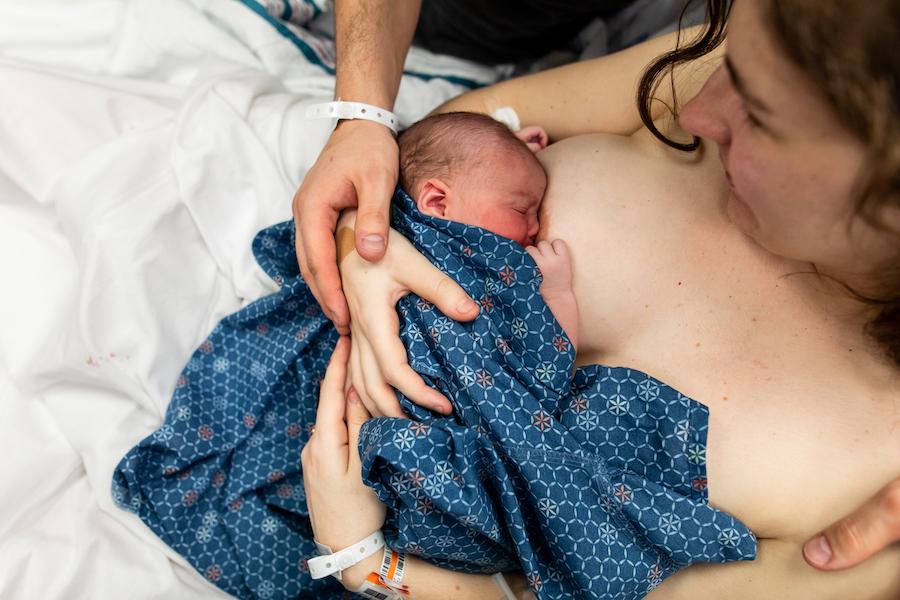The first days after childbirth vary immensely, and usually look something like this:
Day 1: The first hours, babies are very active, alert and ready to nurse. But not all babies. Some babies might feel nauseous and vomit, be tired after childbirth or have a headache from a traction cup. Healthy newborns born at term can survive the first day on reserves from when they were in your womb. After their first waking hours, many newborn infants fall into a deep sleep that can last for a day.
Day 2: However, baby needs to get breast milk on the second day. Most infants start sucking within 24 hours, and thereafter nurse a great deal and often.
This can be a bit challenging since this occurs about the same time that you, a new parent, feel exhausted. You’ve been high on adrenalin the first day while baby slept and then, when baby wants to suck frequently, you feel tired.
You should know and understand that baby needs to nurse a lot during the second day since this stimulates production of more milk. Baby gets small drops of colostrum, that you sometimes don’t even see. Prioritize resting the brief moments when your baby sleeps. Your little one might want to nurse 8 to 12 times, or even more frequently, during the second day. During the first weeks, you should nurse at least every four to five hours.
It’s important to know that your newborn needs to eat at night too. If you wake up and feel like it’s time to nurse (you can feel it in your breasts), wake your baby and put baby to your breast. If your baby does not want to wake up, you can wake him or her by changing the diaper.
Day 3–5: On the third, fourth or fifth day, your mature milk will come in. At that point, your infant may be sucking on two breasts during each meal, and taking a break to sleep. Sometimes infants will want to eat from two to four breasts per feeding session before feeling full (= switch back to the first and second breast one more time; think “four-course meal”). Normally, once the mature milk has come in, you will notice more breaks between active nursing sessions.
Is baby getting enough food?
A sign that baby is getting enough food is that he or she pulls off the breast and is content, that he or she is active and alert between feedings, and that he or she urinates and has stools several times per day. Your infant’s stools will change color, from black to a greenish-brownish color to a mustard yellow color over the first few days.
